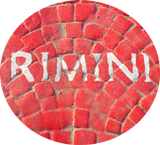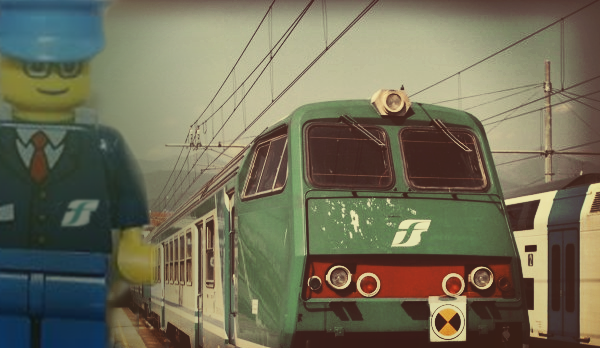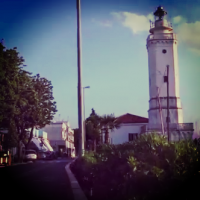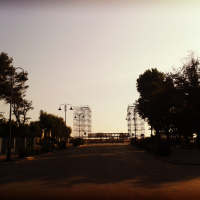Using the Italian Train System
Train travel in Italy is relatively cheap, depending upon the type of train you choose, and efficient. If you’re not comfortble with driving in a foreign country, but want to travel around a bit, the train is the perfect option for you.
Deciphering the Italian train System – the Trains
The first thing to do, when deciding on a train trip, is to check what type of routes/trains are available. The easiest way to do this is to go to the TrenItalia website (with a secion in English). Here you can input your departure and arrival points, and date and time of journey, and you’ll get a list of possible trains. So far, so good. The system, though, depends upon your knowledge of the different types of trains – as they change radically the service, travel time, and cost of your journey. So, here’s a quick breakdown of the different types of train:
-
 Eurostar
EurostarThese are sleek, comfortable, high-speed trains that run on specific routes. They’ll get you there faster (presuming they’re running on time!), but there’s an obligatory seat booking with the ticket, so tickets must be bought in advance. With the computerised booking system, advanced might mean as little as 10 minutes – but beware of peak travel times when the trains sell out.
Sample Journey Time: Rimini – Bologna 55minutes
Sample Ticket Price: 1st class €21, 2nd class €15
-
 Inter-City Plus
Inter-City PlusInter City plus is a new category of train, and in theory means the train is part of a brand new/upgraded fleet of fast trains. Trains have air-conditioning, and often a mini-bar or restaurant carriage. Tickets, in most cases, must be bought in advance.
Sample Journey Time: Rimini – Bologna 1hr 09mins
Sample Ticket Price: 1st class €15, 2nd class €11.50
-
 Inter City
Inter CityThe trains are older, and the travel time is longer (by minutes), and the’re more expensive! That seems to be the difference between the Inter City trains and the new Inter City Plus category.
Sample Journey Time: Rimini – Bologna 1hr 16mins
Sample Ticket Price: 1st class €17, 2nd class €13.50
Outside the EuroStar and InterCity categories, the difference between the different types of trains available becomes more subtle, requiring a PhD in semiotics. The best way to decide between them is to simply check the price and journey time.
You may imagine that, trains between Rimini Bologna take roughly the same time – and indeed most trains will get you between the two within an hour and a half. There is, though, for example, one regionale train that goes via Ravenna, and takes an extra hour!
-
 Regionale
RegionaleThe advantage of trains outside the Eurostar/Inter City classes are that you can buy a ticket which only becomes valid when you stamp it. So, you can buy a ticket well in advance, and decide at the last minute when you want to travel. No booking is required, so you can hop on the train as long as you can get elbow room! The other advantage is that these trains, while taking a bit longer, are amongst the cheapest per km in Europe!
Sample Journey Time: Rimini – Bologna 1hr 25mins
Sample Ticket Price: 1st class €10, 2nd class €6.65
-
 Espresso
EspressoEspresso trains are trains with a limited amount of stops, meaning they’re quicker than the average Regionale train. They are more expensive as a result. They’re a midway option between a Regionale and an InterCity. No booking is required, and trains are generally only second class
Sample Journey Time: Rimini – Bologna 1hr 10mins
Sample Ticket Price: 2nd class €9.65
-
 InterRegionale
InterRegionaleAside from the geographical distinction, and perhaps 6minutes in travel time, it’s hard to see exactly what the difference between the Regionale and the InterRegionale is. So our advice – don’t think twice, it’s alright. If the travel time suits you, jump on.
Sample Journey Time: Rimini – Bologna 1hr 32mins
Sample Ticket Price: 2nd class €6.65
-
 Regionale Veloce
Regionale VeloceA classic example of how train categories can get you scratching your head in amazement. The Regional Veloce, translates as Fast Regional. Why then, is the travel time roughly the same as a regionale? Perhaps someone, in the bowels of TrenItalia’s headquarters knows – but if so, they’re not telling.
Sample Journey Time: Rimini – Bologna 1hr 29mins
Sample Ticket Price: 1st class €10.40, 2nd class €6.65
Buying Your Ticket
In the Train Station
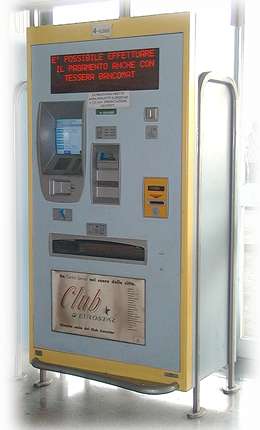 You’ve two options when buying your ticket in the train station.
You’ve two options when buying your ticket in the train station.
The first is to queue up to buy your ticket from the biglietteria or ticket office. If you’re unsure about your options, or need assistance, this is the best option.
The second is to use one of the automatic ticket machines (distributori self-service) found in the majority of Italian train stations. Be careful to check the type of machine first – there are those that accept only credit card/bank card, and those that accept credit card/bank card, and cash. The machines operate by touchscreen, and have various different language options, including english.
Should anything go wrong with the machine while in use – a rare occurence – go immediately to the information desk and explain your problem. They should be able to resolve any issue.
Online/Phone
In an innovative system, you can buy your tickets online or through the Trenitali call center (89 20 21 ), with ticket issuing occuring in the three following ways:
1.) Ticketless: You can buy your ticket online with this option, and will either be sent an email confirmation which can be printed, or you’ll be given a booking code which can then be given to the ticket controller on-board your train, who will print you out a ticket on the spot. This option is not available for all trains, though.
2.) Self-Issuing: If ticketless doesn’t suit you, you can still purchase online, and pick up your ticket in one of the automatic ticket-machines in the station. The service is free, you’ll need to enter in your booking code and some other details to pick up the ticket.
3.) Home-Delivery: You can choose to have your ticket/s sent via registered letter to a specific address. This takes between 4-6 working days, and incurrs an extra charge of €3.35 and is only available within Italy.
Finding the right platform
The most overlooked element of catching your train! Don’t be embarassed if it seems difficult, as the system is far from intuitive. Your platform will not be printed on your ticket, and your destination may not be on the departures board. So how do you work it out?
Here’s what you have to do. In each station there are Yellow timetable boards, detailing all the daily departures from the station. Go to the board, and find your train by checking against the timetable. When you’ve matched the train to the time, check that your destination is listed in the stops for the train on the timetable. Finally, check the final destination .ie Milan. Do not assume the platform listed on the timetable is the correct one – these are guidelines only. Instead, go to the departures board and find your train listed by ultimate arrival point (.ie Milan), and the platform (binario) should be listed.
Stay alert when on the platform. Sudden platform changes are not unknown, and will be signalled by an announcement in rapid Italian over the public address system. If you’re on a packed platform, and all of a sudden passengers around you rush to a different platform – you know what’s happened!
